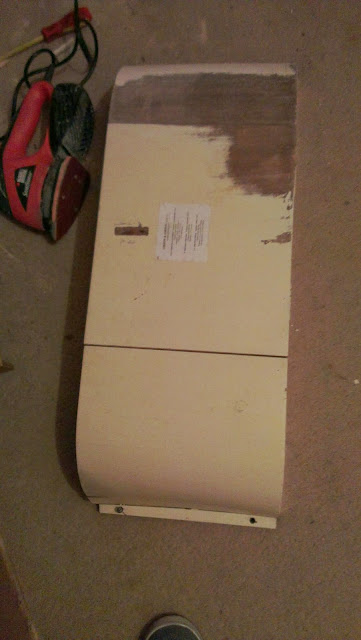A reasonably productive day today. Headed up to the puku and started to dismantle the interior further. I still needed to find where a couple of leaks were coming from and need to strip back all the rotten wall cladding to inspect the frame. I started by removing the seats. These are only held in be a couple of screw, but as with everything else, these would not budge. I've always found a sash knife to be my best friend when it comes to carefully removing panels. A couple of quick taps with the sash knife and the seats were out. I then turned my attention to the walls(or what's left of them). Again using the sash knife I carefully removed the wall cladding. I intend to use the delicate remains as a template, to save time when making the new panels.
Once removed I could then see the frame. What a delightful surprise! There was next to no rot! A couple of bits to repair but nothing major.
I then started to remove the ceiling panels, again being carefully not to damage them too much, as I will use them as templates. I got a not so nice surprise, as I removed one of the boards, as hiding in the roof was a huge wasps nest! Although dormant is still startled me quite a bit.

I always find it nice to see notes and markings left by the people who built the caravan. There's quite a few in this van, just going to show how much of it was original. One of them scratched onto the back of an aluminum panel looks like a four spoked steering wheel, whilst most of the others are just references or a craftsman initials.
With all the interior panels removed I have found the source of two of the leaks. Both of them are damaged areas of the fibreglass front panel. You can see one of the damaged areas in the photo below. It is right below the gutter spout. There is also I thin wooden strip between where the end panel and the roof join, that is quite rotten. Interestingly later Cheltenhams duo not have this wooden strip and the two panels are joined directly to each other. I may look at altering this to the latter style to prevent the wood rotting again.
The final job for the day, was to fit one of the new windows I made last week. I haven't sealed them as I will be taking them back out when it comes to painting.
Back home, I decided it as time to take the plunge and see how much of the front pelmet/cupboard, was actually reusable. As I feared, it's pretty much all had it's day. The first clue, would have been it shedding bits of itself whenever I went near it. The only parts that are salvagable, are the battens that hold it together and maybe the end pieces. The end pieces are starting to delaminate but maybe be salvageable yet, with enough time and patience. I manage to persuade most of it to come apart with it losing its shape, or completely destroying any of it, so remaking a replacement should be a dodle.
I will also be making up paper templates for it, as I've been asked for help by another Cheltenham owner.
 I always find it nice to see notes and markings left by the people who built the caravan. There's quite a few in this van, just going to show how much of it was original. One of them scratched onto the back of an aluminum panel looks like a four spoked steering wheel, whilst most of the others are just references or a craftsman initials.
I always find it nice to see notes and markings left by the people who built the caravan. There's quite a few in this van, just going to show how much of it was original. One of them scratched onto the back of an aluminum panel looks like a four spoked steering wheel, whilst most of the others are just references or a craftsman initials.





















